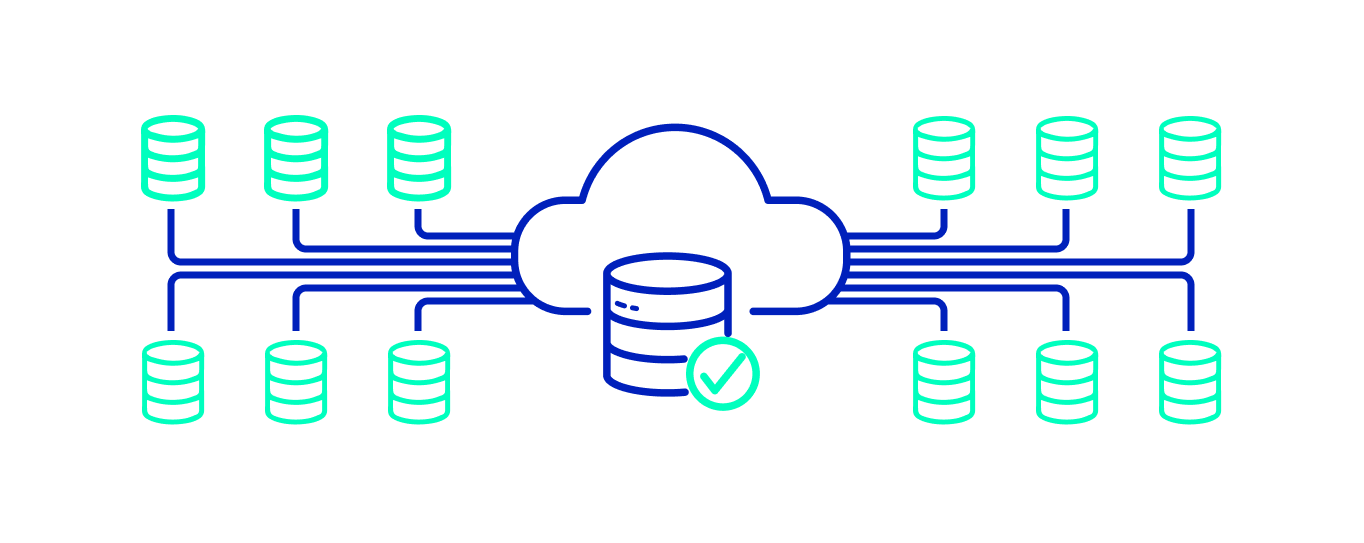Key takeaways:
- Big Data Analytics could benefit from greater data integrity, transferability and security.
- AI in Big Data should reduce the effort needed for quick, accurate and useful analyses.
- GenAI reduces the technical knowledge required to set up Big Data Analytics systems and derive valuable insights from them.
Big data analytics, which is the process of drawing inferences from large sets of data is gaining more traction. These inferences help identify hidden patterns, customer preferences, trends, and more.
To uncover these insights, big data analysts, often working for consulting agencies, use data mining, text mining, modeling, predictive analytics, and optimization. Lately, big data analytics has been touted as a panacea to cure all the woes of business. Big data is seen by many to be the key that unlocks the door to growth and success.
However, although big data analytics is a remarkable tool that can help with business decisions, it does have its limitations. Let’s dissect some of the major statistics-oriented and operational-related big data limitations and the applicable solutions.
What is Big Data?
Big data is the term given to data which is at high volume, high velocity and at a high level of variety. It generally means large and complex data sets that are too big for normal data processing software to manage, but which can unlock vital business insights if processed and analyzed to their fullest extent.
The ultimate goal of big data analytics is to derive value from the data, despite the challenges associated with processing and analyzing such complex and often unstructured data. Big data applications frequently require real-time or near-real-time processing to support timely decision-making and streaming analytics.

The Limitations and Solutions for Big Data Analytics
More and more businesses are exploring the potential of big data, and bringing together as many different data sources as they can, from social media impressions and phone call logs to supply chain information and customer feedback. However, big data is not necessarily a catch-all solution, and a number of sectors are finding it a difficult proposition in practice. For example, many manufacturers are dealing with challenges in applying context to integrated data, put in place the infrastructure needed, and extend analytic capabilities to legacy devices.
These are the five biggest limitations affecting businesses exploring big data analytics right now - along with the good news that none of these challenges are insurmountable:
 Prioritizing Correlations
Prioritizing Correlations
Data analysts use big data to tease out correlation: when one variable is linked to another. The goal here is to confirm whether correlation equals causation or not. This helps avoid inaccurate conclusions, that in a worst-case scenario could be biased or discriminatory.
Data analysts should carefully consider the context, potential confounding variables, and underlying causal mechanisms. Domain expertise and statistical techniques help distinguish meaningful relationships from mere coincidences. Communicating limitations and uncertainties of the findings can prevent misinterpretation or misuse of the insights derived from big data.
Solution: Discover the Worthwhile Correlations
A good consultant will help identify relevant correlations. Ideally, they will use a range of detailed correlation methods to focus on the right variables, and ensure that the correlations generated are meaningful, accurate and free of bias. Plenty of the magic happens in data pre-processing, so dimension reduction techniques like Principal Component Analysis, Backward feature elimination, feature selection and Linear Discriminant Analysis go a long way.
 Security Risks and Concerns
Security Risks and Concerns
As with many technological endeavors, big data analytics is prone to data breach. Any data that falls into the wrong hands could be used by competitors to grab market share, allow cybercriminals to access sensitive data or financial account details, or enable them to steal the identity of users, employees or customers.
The volume of the data involved means that a successful breach can cause a huge amount of operational, legal, financial and reputational damage. And not only is protecting all that data difficult, it can also be an expensive endeavor because of the sheer scale of the information that needs protecting.
Solution: Encryption is Key
It is absolutely essential that all big data is encrypted, whether a business works with a big data consultant or not. This ensures that the data has no value or relevance to anyone that doesn’t have the encryption code. This should be deployed as part of a range of different security solutions, such as Identity Access Management, endpoint protection, real-time monitoring and the expertise of cybersecurity professionals.
 Restrictions with Transferability
Restrictions with Transferability
Data collection and analysis can’t always be easily transferred to other domains or organizations, due to differences in data formats, semantics or structures. This can limit the value that big data can offer, as it becomes more difficult to share insights across departments or businesses.
Because much of the data you need analyzed lies behind a firewall or on a private cloud, it takes technical know-how to efficiently get this data to an analytics team. That technical expertise is becoming increasingly difficult and expensive to attract and maintain, in a climate where the global IT skills gap is continuing to widen. Furthermore, it may be difficult to consistently transfer data to specialists for repeat analysis.
Solution: Choose the Right Tools and Storage
It’s vital to have the right data integration and ingestion tools in place, so that all systems and applications involved with big data can accurately process and analyze all the information at their disposal. Modern integration solutions are ideal for ensuring that there are reliable data gateways in place, and to ease the process of incorporating new applications and the ecosystems of any partners.
 Inconsistency and Data Collection
Inconsistency and Data Collection
Sometimes the tools we use to gather big data sets are imprecise. For example, Google is famous for its tweaks and updates that change the search experience in countless ways; the results of a search on one day will likely be different from those on another day. If you were using Google search to generate data sets, and these data sets changed often, then the correlations you derive would change, too.
The inconsistency can also be through less technical means, and could simply be down to variations in data collection methods, measurements techniques, or just the general quality of the data itself. Dealing with these issues is vital for preventing biases or inaccuracies in any results generated by artificial intelligence tools.
Solution: Implement Strict Processes
These issues can be resolved by ensuring that there are robust processes in place, and making sure that everyone within the organization sticks to them. This can include a central semantic store or a master reference store, which ensures that all data inputs and updates are logged in one place, so that there is a single ‘source of truth’ for data and no risk of duplication or inconsistency creeping in.
 Lack of Internal Knowledge
Lack of Internal Knowledge
Ultimately, you need to know how to use big data to your advantage in order for it to be useful. The use of big data analytics is akin to using any other complex and powerful tool. For instance, an electron microscope is a powerful tool, too, but it’s useless if you know little about how it works.
But as we mentioned earlier on, accessing these skills can be extremely expensive - if indeed an organization is able to get hold of them at all. The result of big data processes based on limited expertise can be a lack of utilization of data assets, inaccurate results, and ultimately poor business decision-making.
Solution: Seek Expertise
If accessing skilled big data experts on a full-time basis is unaffordable or simply impractical, then the best solution is to turn to outsourcing and bring in expertise as and when it's required. This is an area where Ciklum is already helping businesses like yours, alongside our powerful data analytics solutions and Al-driven big data platforms. We're trusted by organizations in all sectors to be a helping hand when it comes to making the most of big data, driving the best insights possible, and keeping that data safe and secure in the process.
That said, there are other limitations such as downtime in data sources and a scope of objectives far beyond what the available data can service. With proper problem definition and overall planning, you can identify areas where AI solutions in particular can help.
How AI is Complementing Big Data Analytics
AI is already helping Big Data analysts in many ways, including:
Data Preparation and Visualization – As mentioned above, data transferability can be really tricky when dealing with Big Data. However, analytics and LLM integrations can help process data sets into accessible formats, generating custom data visualizations like bar and line graphs, pie-charts and tables.
Additionally, GenAI can help data engineers build the pipelines that Big Data analysts rely on. They get code suggestions for the specific problems they are trying to solve and also debug faster, with these techniques available across various coding tools.
They can also quickly create formulas for calculated fields using natural language descriptions, generate descriptions of data assets based on their attributes and get SQL queries. Along with other features for automating preparation efforts, they increase the likelihood of quickly deriving pertinent insights from Big Data.
Synthetic Data Generation: This capability is crucial in addressing security concerns. For example, you can use GenAI to create new datasets with properties similar to existing ones but without confidential information in the sets they emulate.
More importantly, the underlying principles can extend to data augmentation. Where there's limited data for training models, people are using GenAI to create synthetic variations of images, speech and other data. This can help improve accuracy when using Big Data analysis to detect rare diseases, narrow crime suspect lists and more.
In a sense, this also addresses the correlation problem since it helps with context. Say you’re using an algorithm to sniff out possible terrorist or hacker communications from multiple text and audio messages. A GenAI tool that replicates a particular message in different languages, slang, intonations and symbols may help immensely.
Consequently, you're less likely to wrongly profile a candidate in your search simply because of a small correlation. This concept has been applied by researchers working to improve Alkaptonuria diagnosis, among other ailments.
Conclusion:
Big data analytics can help businesses gain valuable insights and grow through informed decisions. However, prioritizing meaningful correlations, mitigating security risks, ensuring data consistency and building internal knowledge remain challenging. Domain expertise, robust security measures, modern data integration tools, strict data governance processes, and external assistance can unlock its true value. They make big data a competitive advantage, driving innovation, improving customer experiences, and achieving sustainable growth in an increasingly data-centric landscape.
Blogs



































